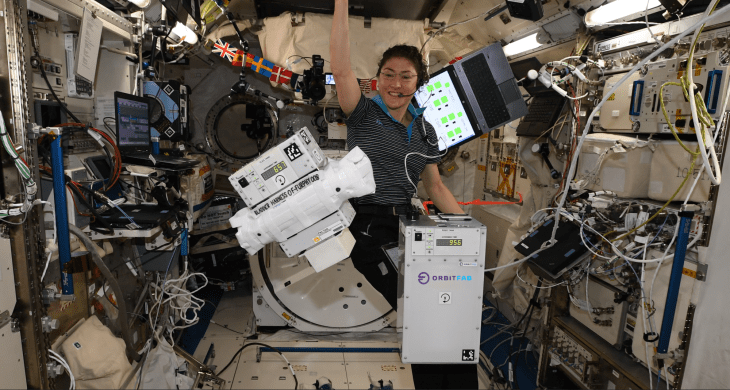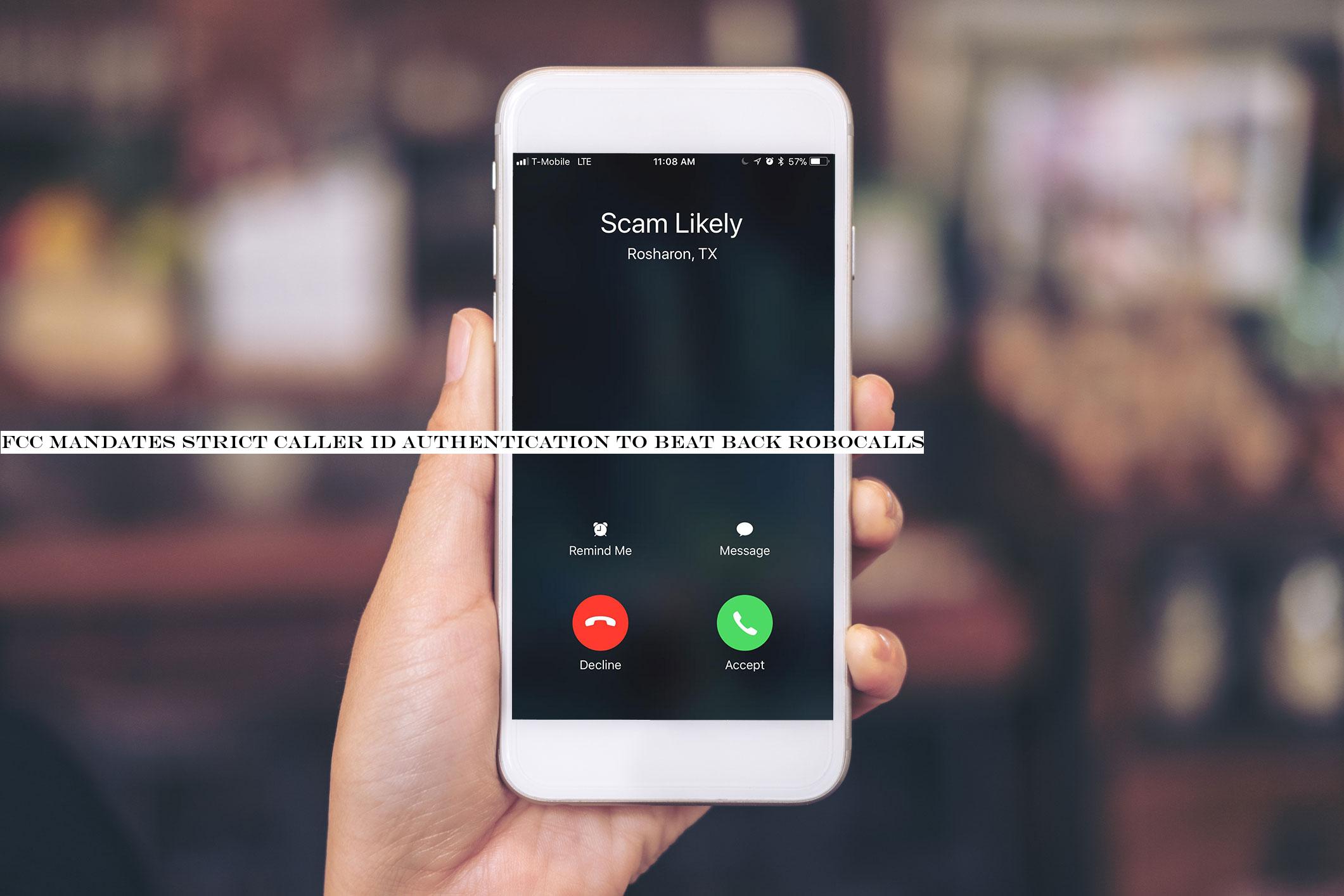Music
Trailers
DailyVideos
India
Pakistan
Afghanistan
Bangladesh
Srilanka
Nepal
Thailand
StockMarket
Business
Technology
Startup
Trending Videos
Coupons
Football
Search
Download App in Playstore
Download App
Best Collections
Technology
Therea joke* being reshared on chat apps that takes the form of a multiple-choice question — asking whothe leading force in workplace digital transformation? The red-lined punchline is not the CEO or CTO, but: C) COVID-19.
Therelikely more than a grain of truth underpinning the quip. The novel coronavirus is pushing a lot of metaphorical buttons right now. &Pause& buttons for people and industries, as large swathes of the worldpopulation face quarantine conditions that can resemble house arrest. The majority of offline social and economic activities are suddenly off limits.
Such major pauses in our modern lifestyle may even turn into a full reset, over time. The world as it was, where mobility of people has been all but taken for granted — regardless of the environmental costs of so much commuting and indulged wanderlust — may never return to &business as usual.&
If global leadership rises to the occasion, then the coronavirus crisis offers an opportunity to rethink how we structure our societies and economies — to make a shift toward lower carbon alternatives. After all, how many physical meetings do you really need when digital connectivity is accessible and reliable? As millions more office workers log onto the day job from home, that number suddenly seems vanishingly small.
COVID-19 is clearly strengthening the case for broadband to be a utility — as so much more activity is pushed online. Even social media seems to have a genuine community purpose during a moment of national crisis, when many people can only connect remotely, even with their nearest neighbours.
Hence the reports of people stuck at home flocking back to Facebook to sound off in the digital town square. Now that the actual high street is off limits, the vintage social network is experiencing a late second wind.
Facebook understands this sort of higher societal purpose already, of course. Which is why itbeen so proactive about building features that nudge users to &mark yourself safe& during extraordinary events like natural disasters, major accidents and terrorist attacks. (Or indeed, why it encouraged politicians to get into bed with its data platform in the first place — no matter the cost to democracy.)
In less fraught times, Facebook&purpose& can be loosely summed to &killing time.& But with ever more sinkholes being drilled by the attention economy, thata function under ferocious and sustained attack.
Over the years the tech giant has responded by engineering ways to rise back to the top of the social heap — including spying on and buying up competition, or directly cloning rival products. Itbeen pulling off this trick, by hook or by crook, for over a decade. Albeit, this time Facebook can&t take any credit for the traffic uptick; a pandemic is naturedark pattern design.
Whatmost interesting about this virally disrupted moment is how much of the digital technology thatbeen built out online over the past two decades could very well have been designed for living through just such a dystopia.
Seen through this lens, VR should be having a major moment. A face computer that swaps out the stuff your eyes can actually see with a choose-your-own-digital-adventure of virtual worlds to explore, all from the comfort of your living room? What problem are you fixing, VR? Well, the conceptual limits of human lockdown in the face of a pandemic quarantine right now, actually…
Virtual reality has never been a compelling proposition versus the rich and textured opportunity of real life, except within very narrow and niche bounds. Yet all of a sudden, here we all are — with our horizons drastically narrowed and real-life news thatceaselessly harrowing. So it might yet end up a wry punchline to another multiple choice joke: &My next vacation will be: A) Staycation, B) The spare room, C) VR escapism.&
Itvideoconferencing thatactually having the big moment, though. Turns out even a pandemic can&t make VR go viral. Instead, long-lapsed friendships are being rekindled over Zoom group chats or Google Hangouts. And Houseparty — a video chat app — has seen surging downloads as barflies seek out alternative night life with their usual watering-holes shuttered.
Bored celebs are TikToking. Impromptu concerts are being live-streamed from living rooms via Instagram and Facebook Live. All sorts of folks are managing social distancing, and the stress of being stuck at home alone (or with family), by distant socializing: signing up to remote book clubs and discos; joining virtual dance parties and exercise sessions from bedrooms; taking a few classes together; the quiet pub night with friends has morphed seamlessly into a bring-your-own-bottle group video chat.
This is not normal — but nor is it surprising. We&re living in the most extraordinary time. And it seems a very human response to mass disruption and physical separation (not to mention the trauma of an ongoing public health emergency thatkilling thousands of people a day) to reach for even a moving pixel of human comfort. Contactless human contact is better than none at all.
Yet the fact all these tools are already out there, ready and waiting for us to log on and start streaming, should send a dehumanizing chill down societybackbone.
It underlines quite how much consumer technology is being designed to reprogram how we connect with each other, individually and in groups, in order that uninvited third parties can cut a profit.
Back in the pre-COVID-19 era, a key concern being attached to social media was its ability to hook users and encourage passive feed consumption — replacing genuine human contact with voyeuristic screening of friends& lives. Studies have linked the tech to loneliness and depression. Now that we&re literally unable to go out and meet friends, the loss of human contact is real and stark. So being popular online in a pandemic really isn&t any kind of success metric.
Houseparty, for example, self-describes as a &face to face social network& — yet itquite the literal opposite; you&re foregoing face-to-face contact if you&re getting virtually together in app-wrapped form.
The implication of FacebookCOVID-19 traffic bump is that the companybusiness model thrives on societal disruption and mainstream misery. Which, frankly, we knew already. Data-driven adtech is another way of saying itbeen engineered to spray you with ad-flavored dissatisfaction by spying on what you get up to. The coronavirus just hammers the point home.
The fact we have so many high-tech tools on tap for forging digital connections might feel like amazing serendipity in this crisis — a freemium bonanza for coping with terrible global trauma. But such bounty points to a horrible flip side: Itthe attention economy thatinfectious and insidious. Before &normal life& plunged off a cliff, all this sticky tech was labelled &everyday use;& not &break out in a global emergency.&
Itnever been clearer how these attention-hogging apps and services are designed to disrupt and monetize us; to embed themselves in our friendships and relationships in a way thatsubtly dehumanizing; re-routing emotion and connections; nudging us to swap in-person socializing for virtualized fuzz designed to be data-mined and monetized by the same middlemen who&ve inserted themselves unasked into our private and social lives.
Captured and recompiled in this way, human connection is reduced to a series of dilute and/or meaningless transactions; the platforms deploying armies of engineers to knob-twiddle and pull strings to maximize ad opportunities, no matter the personal cost.
Italso no accident we&re seeing more of the vast and intrusive underpinnings of surveillance capitalism emerge, as the COVID-19 emergency rolls back some of the obfuscation thatused to shield these business models from mainstream view in more normal times. The trackers are rushing to seize and colonize an opportunistic purpose.
Tech and ad giants are falling over themselves to get involved with offering data or apps for COVID-19 tracking. They&re already in the mass surveillance business, so therelikely never felt like a better moment than the present pandemic for the big data lobby to press the lie that individuals don&t care about privacy, as governments cry out for tools and resources to help save lives.
First the people-tracking platforms dressed up attacks on human agency as &relevant ads.& Now the data industrial complex is spinning police-state levels of mass surveillance as pandemic-busting corporate social responsibility. How quick the wheel turns.
But platforms should be careful what they wish for. Populations that find themselves under house arrest with their phones playing snitch might be just as quick to round on high-tech gaolers as they&ve been to sign up for a friendly video chat in these strange and unprecedented times.
Oh, and Zoom (and others) — more people might actually read your &privacy policy& now they&ve got so much time to mess about online. And that really is a risk.
*Source is a private Twitter account called @MBA_ish

- Details
- Category: Technology Today
Read more: What does a pandemic say about the tech we’ve built
Write comment (94 Comments)
The first quarter of 2020 ended with a whimper — with the Dow Jones Industrial Average, S-P 500 and Nasdaq posting their worst quarter in decades — as the COVID-19 pandemic continues to cause uncertainty and volatility across all major stock market indices.
At the beginning of the quarter, we were still basking in a decade-long bull market. The global pandemic, and the economic havoc it caused, put an end to those halcyon days. All major American indices dropped into bear-market territory March 12, after shedding the requisite 20% from recent highs.
The roller coaster continued, with equities bumping along the bottom, periodically popping up, only to fall again as the epicenter of the pandemic shifted from China to Europe and now the United States. The number of cases in the U.S. has prompted states to issue stay at home orders, putting the brakes on business as usual. As a result, unemployment benefits have skyrocketed. Last week alone, around 3.3 million Americans filed for unemployment benefits, dwarfing numbers set during the 2008-era economic meltdown.
The economic stimulus bill, known as the CARES Act, along with a series of actions taken by the Federal Reserve, have provided some lift. But the volatility continues. For the quarter, Dow Jones is down 24.08%, while the S-P is down 20.67% and Nasdaq is off 15.3%.
Herethe breakdown of what happened today:
- Dow Jones Industrial Average: declined 1.85%, or 413.11 to 21,914.37
- S-P 500: slid 1.61%, or 42.18, to 2,584.47
- Nasdaq Composite: fell 0.95%, or 74.05, to 7,700.10
All sectors were down today, with the exception of the energy sector, which saw a lift after being battered for weeks. Meanwhile, investors have fled equities for treasuries, pushing yields down. Case in point: U.S. 10-year yields are down 64% in the first quarter.
SaaS shares fell more than most tech equity in todaytrading, with the Bessemer cloud index off a little over 2.5%. The index, which tracks a basket of SaaS and cloud shares, is off around 20% from its recent highs. Shares of modern software companies are therefore still technically in a bear market, though just. If recent gains hold, the index will have made up around 10% of its lost ground since recent lows.
Wrapping on cryptocurrencies as we close the book on the quarter, bitcoin posted a net loss for the period. Itworth just over $6,400 as we write this post.
What a quarter. What a quarter of surprises and turmoil and cut expectations and downgraded hope. Hereto a better Q2, if we can manage.
- Details
- Category: Technology Today
Read more: Stocks post worst quarter since 2008 financial crisis
Write comment (98 Comments)
Marriott has confirmed a second data breach in three years — this time involving the personal information on 5.2 million guests.
The hotel giant said Tuesday it discovered in late February the breach of an unspecified property system at a franchise hotel. The hackers obtained the login details of two employees, a hotel statement said, and broke in weeks earlier during mid-January.
Marriott said it has &no reason& to believe payment data was stolen, but warned that names, addresses, phone numbers, loyalty member data, dates of birth and other travel information — such as linked airline loyalty numbers and room preferences — were taken in the breach.
Starwood, a subsidiary of Marriott, said in 2018 its central reservation system was hacked, exposing the personal data and guest records on 383 million guests. The data included five million unencrypted passport numbers and eight million credit card records.
It prompted a swift response from European authorities, which issued Marriott with a fine of $123 million in the wake of the breach.
- Details
- Category: Technology Today
Read more: Marriott says 5.2 million guest records were stolen in another data breach
Write comment (99 Comments)
On-orbit satellite refueling technology is closer than ever to a practical reality, which could help immensely with the cost and sustainability of orbital businesses. Startup OrbitFab, a 2019 TechCrunch Battlefield finalist, is one of the companies working to make orbital refueling a reality, and it just secured a new contract from the National Science Foundationearly-stage deep tech R-D initiative AmericaSeed Fund to further its goals.
The contract is specifically for development of a solution that provides rendezvous and docking capabilities in space, managing the end-to-end process of connecting two spacecraft and transferring fuel from one to the other. OrbitFab last October at Disrupt unveiled its connector hardware for making this possible, which it now refers to as its Rapidly Attachable Fluid Transfer Interface (RAFTI). RAFTI is designed as a replacement for existing valves used in satellites for fueling and draining propellant from spacecraft, but would seek to establish a new standard that provides easy interoperability both with ground fueling and with in-space refueling (or fuel transfer from one satellite to another, depending on whatneeded).
Already, OrbitFab has managed to fly twice to the International Space Station (ISS), and last year it became the first-ever private company to supply the orbital lab with water. Itnot resting on its laurels, and this new contract will help it prepare a technology demonstration of the docking process its RAFTI facilitates in its own test facilities this summer.
Longer-term, this is just phase one of a multi-par funding agreement with the NSF. Phase one includes $250,000 to make that first demo, and then ultimately that will lead to an inaugural trial of a fuel sale operation in space, which OrbitFab CMO Jeremy Schiel says should happen &within two years.&
&This will involve 2 satellites, our tanker, and a customer satellite, in a low LEO [low Earth orbit] docking, exchanging fuel, and decoupling, and repeating this process as many times as we can todemonstrate our capability,& he wrote via email.
There have been a number of technical projects and demonstrations around orbital refueling, and some of the largest companies in the industry are working on the challenge. But OrbitFabapproach is aiming for simplicity, and ease of execution, along with a common standard that can be leveraged across a wide range of satellites large and small, from a range of companies. Already, OrbitFab says itworking with a group of 30 different campaigns and organizations on making RAFTI a broadly adopted interface.
If successful, OrbitFab could underpin a future orbital commercial operating environment in which fuel isn&t nearly as much a concern when it comes to launch costs, with on-orbit roving gas stations addressing demand for spacecraft once they reach space, and paying a price for propellant thatdefrayed by common, bulk shipments instead of broken up piecemeal.
- Details
- Category: Technology Today
The U.S. Food and Drug Administration (FDA) announced a new program today thatdesigned to foster close collaboration between public and private organizations in order to &bring coronavirus treatments to market as fast as possible,& according to U.S. Department of Health - Human Services Secretary Alex Azar in a press release. The program, dubbed the &Coronavirus Treatment Acceleration Program,& or CTAP, will see the FDA redeploy resources and personnel with an eye toward providing private companies, researchers and scientists with ®ulatory advice, guidance and technical assistance as quickly as possible.&
Based on the information provided by the agency, it sounds like CTAP is a formalization of a lot of the work that was already being done within the FDA to reduce the burden placed on companies and scientists looking to field trials and the steps required by the administration to qualify new treatments and therapies for use.
In real-world terms, the FDA says that means itturning things around much more quickly, reviewing protocols for many freshly submitted clinical studies within 24 hours, and also turning around single-patient requests for expanded access to some therapies granted under compassionate or investigate use &generally within three hours.& The FDA is also looking at how it can build out streamlined protocols that can apply across use by different institutions and for different programs wherever possible to further limit processing time through templated strategies.
Internally, the FDA has re-arranged staffing resources to help make this possible, putting medical and regulatory staff that otherwise would be focused elsewhere on teams dedicated to COVID-19-related reviews.
Therelikely to be some debate about the implications of the introduction of a program like this. On the one hand, it should help novel approaches and even startups in the biotech space with unproven, but promising technologies in development to work hand-in-hand with the FDA on potential solutions. On the other hand, the administration has already been criticized for some of its more aggressive decisions regarding COVID-19 therapeutics, including the Emergency Use Authorization ordered for anti-malarial hydroxychlroquine earlier this week.
While small-scale studies have shown that the drug could offer some benefit in the treatment of COVID-19 patients, the key word there is &could,& and other small-scale studies have shown that standard anti-viral treatments are just as effective. The bottom line is that there isn&t enough data available to say anything definitively either way, and this particular EUA means that efforts to stockpile the drug could make it less available to those who use it for another of its common purposes: treating chronic rheumatoid arthritis, which can be debilitating in its severity.
The current coronavirus pandemic is unprecedented in terms of its spread and impact, at least in terms of viral outbreaks during the modern medical era. The FDA definitely needs to address the situation in a unique manner as a result, but critics and observers will definitely be watching to see what results from increased pressure on the agency to cut red tape.

- Details
- Category: Technology Today

The FCC unanimously passed a new set of rules today that will require wireless carriers to implement a tech framework to combat robocalls. Called STIR/SHAKEN, and dithered over for years by the carriers, the protocol will be required to be put in place by summer of 2021.
Robocalls have grown from vexation to serious problem as predictable &claim your free vacation& scams gave way to &herehow to claim your stimulus check& or &apply for coronavirus testing here& scams.
A big part of the problem is that the mobile networks allow for phone numbers to be spoofed or imitated, and itnever clear to the call recipient that the number they see may be different from the actual originating number. Tracking and preventing fraudulent use of this feature has been on the carriers& roadmap for a long time, and some have gotten around to it in some ways, for some customers.
STIR/SHAKEN, which stands for Secure Telephony Identity Revisited / Secure Handling of Asserted information using toKENs, is a way to securely track calls and callers to prevent fraud and warn consumers of potential scams. Carriers and the FCC have been talking about it since 2017, and in 2018 the FCC said it needed to be implemented in 2019. When that hadn&t happened, the FCC gave carriers a nudge, and at the end of the year Congress passed the TRACED Act to spur the regulator into carrying out its threat of mandating use of the system.
Rules to that effect were proposed earlier this month, and at the FCCopen meeting today (conducted remotely), the measure passed unanimously. Commissioner Jessica Rosenworcel, who has been vocal about the lack of concrete action on this issue, gladly approved the rules but vented her frustration in a statement:
It is good news that today the Federal Communications Commission adopts rules to reduce robocalls through call authentication. I only wish we had done so sooner, like three years ago when the FCC first proposed the use of STIR/SHAKEN technology.
Commissioner Brendan Starks called the rules a &good first step,& but pointed out that the carriers need to apply call authentication technology not just on the IP-based networks but all over, and also to work with each other (as some already are) to ensure that these protections remain in place across networks, not just within them.
Chairman Ajit Pai concurred, pointing out there was much work to do:
Itclear that FCC action is needed to spur across-the-board deployment of this important technology…Widespread implementation of STIR/SHAKEN will reduce the effectiveness of illegal spoofing, allow law enforcement to identify bad actors more easily, and help phone companies identify—and even block—calls with illegal spoofed caller ID information before those calls reach their subscribers. Most importantly, it will give consumers more peace of mind when they answer the phone.
Thereno silver bullet for the problem of spoofed robocalls. So we will continue our aggressive, multi-pronged approach to combating it.
Consumers won&t notice any immediate changes — the deadline is next year, after all — but itlikely that in the coming months you will receive more information from your carrier about the technology and what, if anything, you need to do to enable it.
- Details
- Category: Technology Today
Read more: FCC mandates strict customer ID authentication to defeat back robocalls
Write comment (93 Comments)Page 1075 of 1419

 8
8





